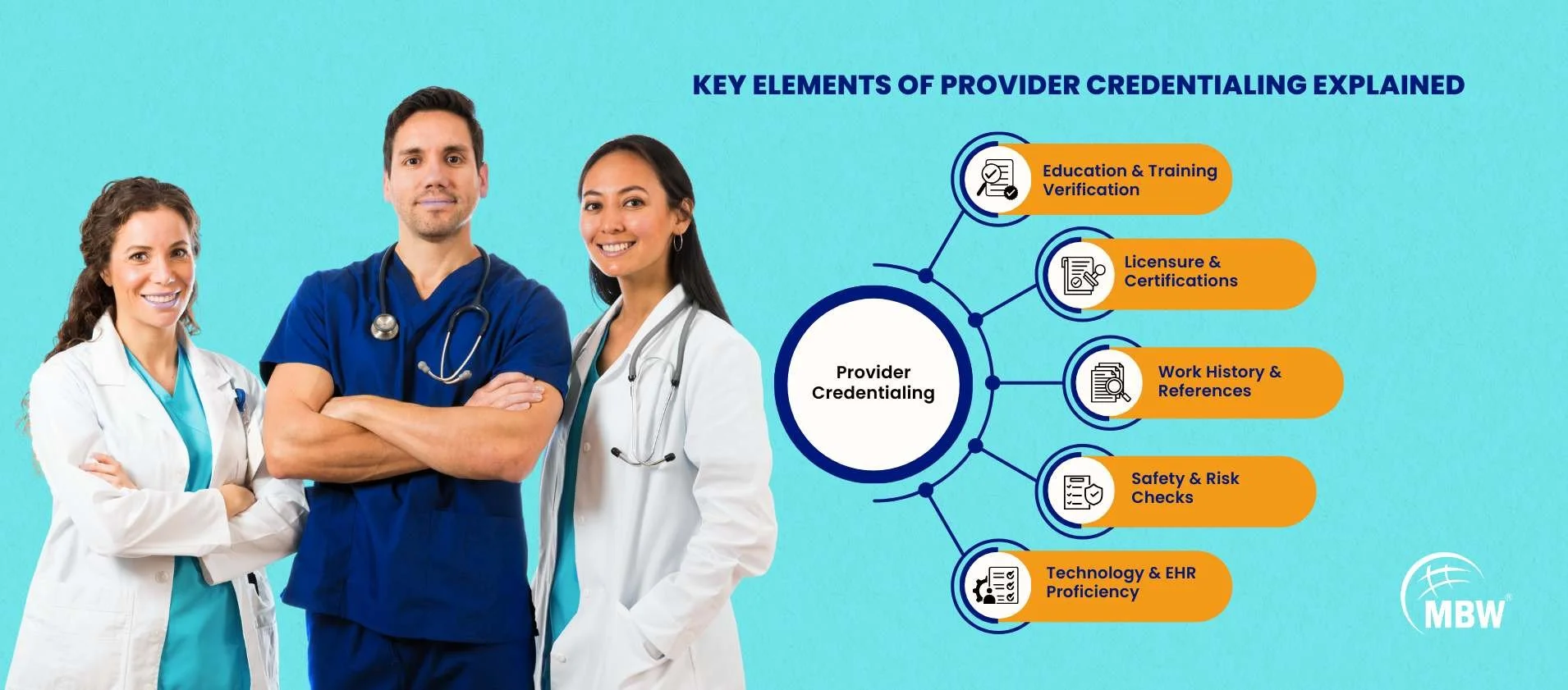The Difference Between Provider Credentialing and Enrollment: And Why You Need Both
In healthcare administration, two terms are often used interchangeably — credentialing and enrollment. While they are closely connected, they are not the same thing. Failing to understand the difference can lead to costly delays, compliance issues, and major gaps in revenue.
Let’s break down what each process means, why both matter, and how they fit together in the bigger picture of your revenue cycle.
Table of Contents
What Is Provider Credentialing?
Credentialing is the verification of a provider’s qualifications, training, licensure, and professional history.
Think of it as the background check that proves a provider is safe, competent, and eligible to deliver care. Hospitals, health systems, and insurance companies require credentialing before granting clinical privileges or allowing a provider to join a network. To understand how this process impacts efficiency and compliance, check out this roadmap to provider credentialing in the revenue cycle.
Key elements include:
Education & Training Verification – Medical school, residency, and fellowship validation.
Licensure & Certifications – Confirming active state licenses, DEA registration, and board certifications.
Work History & References – Employment record and peer recommendations.
Safety & Risk Checks – Malpractice history (via NPDB), sanctions, or OIG exclusion list screening.
📌 Important to know: Credentialing is not optional. Without it, a provider cannot legally practice in a facility or gain payer recognition.
What Is Provider Enrollment?
Enrollment comes after credentialing and is the process of getting a provider officially set up to bill payers and receive reimbursement.
Credentialing proves a provider is qualified; enrollment ensures that qualification is recognized by insurers like Medicare, Medicaid, and commercial health plans.
This step involves:
Completing enrollment applications with payers.
Submitting through systems like PECOS (for Medicare).
Negotiating contracts and reimbursement rates.
Linking the provider’s NPI to the payer’s system.
Key point: A provider could be fully credentialed but still unable to bill insurers until enrollment is complete.
Also Read: A Provider Credentialing & Contracting Checklist
Credentialing vs. Enrollment: Side by Side
Why You Need Both
Skipping or misunderstanding these processes can cause serious revenue and compliance risks:
Lost Revenue: A fully credentialed provider who isn’t enrolled can’t bill insurers, leading to months of unpaid claims.
Compliance Risks: Seeing patients without proper credentialing can expose organizations to lawsuits, fines, and sanctions.
Operational Delays: Each process can take 90–120 days (or longer). Overlaps, missing documents, or missteps often stretch this timeline.
Cash Flow Disruptions: A single provider not enrolled can cost a practice $7,000–$8,000 per month in lost revenue.
Together, credentialing and enrollment form the foundation of a healthy revenue cycle. One proves qualifications; the other opens the door to payment. You can’t afford to have one without the other. To avoid revenue loss and delays, many practices turn to expert physician credentialing services that ensure faster approvals, compliance, and steady reimbursement.
Final Takeaway
Credentialing and enrollment are often confused, but the difference is critical:
Credentialing = Am I qualified and safe to practice?
Enrollment = Can I get paid for the services I provide?
Both are essential pillars of a compliant, profitable practice. Mastering these steps — or outsourcing them to experts — is the surest way to protect your revenue and build trust with patients and payers alike. To learn more about the credentialing process in healthcare, you can refer to this detailed guide on credentialing.
How MBW RCM Can Help
At MBW Revenue Cycle Management, we understand the nuances between credentialing and enrollment — and we manage both seamlessly for our clients.
Credentialing: We handle CAQH, PSV, NPDB checks, references, and compliance monitoring.
Enrollment: We manage Medicare PECOS, Medicaid, and commercial payer enrollment from start to finish.
Ongoing Support: Re-credentialing every 2–3 years, license monitoring, and payer updates.
Revenue Protection: We minimize delays, prevent denials, and safeguard your cash flow.
Don’t let credentialing and enrollment delays cost your practice thousands. With MBW RCM as your partner, you’ll have a streamlined, compliant, and profitable revenue cycle.
Contact MBW RCM today to get started — and let us handle the credentialing and enrollment complexities while you focus on delivering exceptional patient care.


